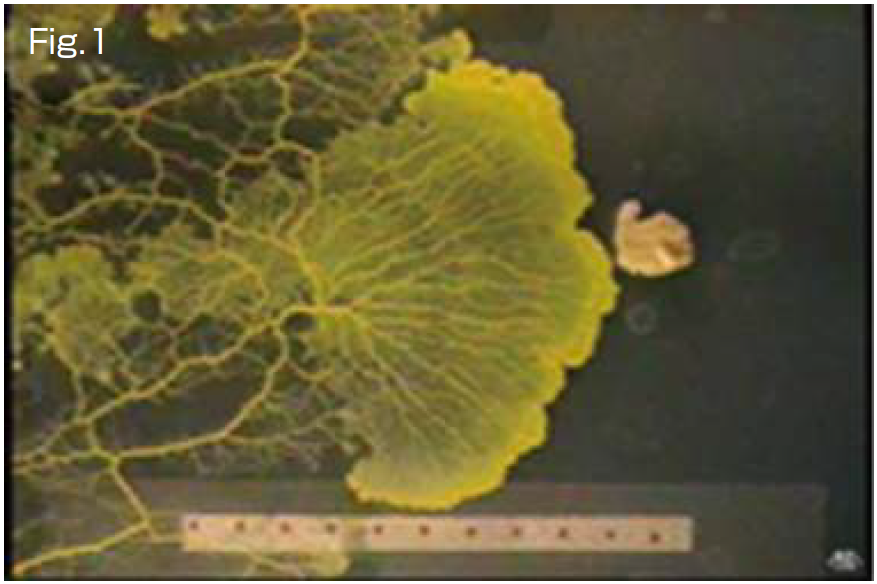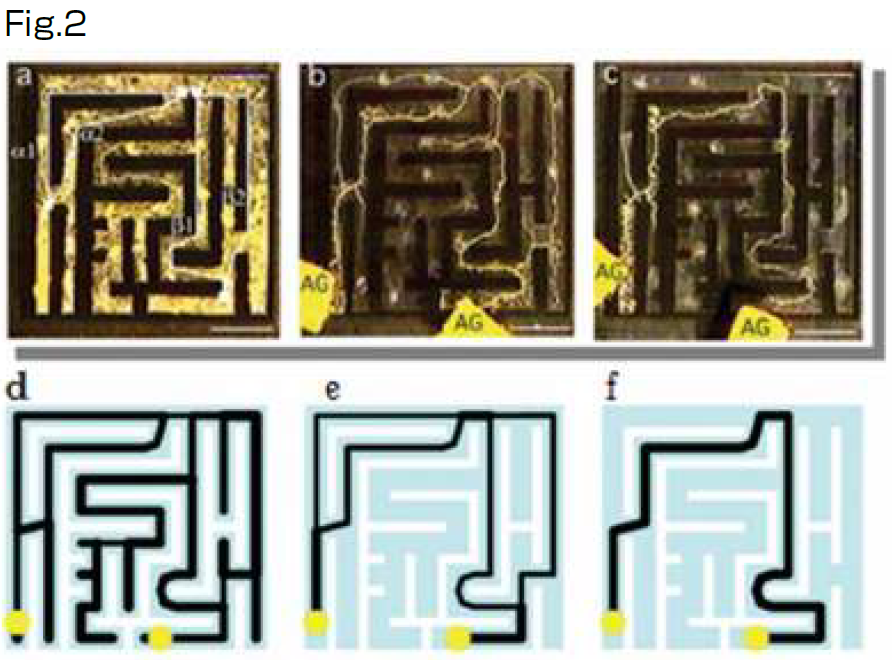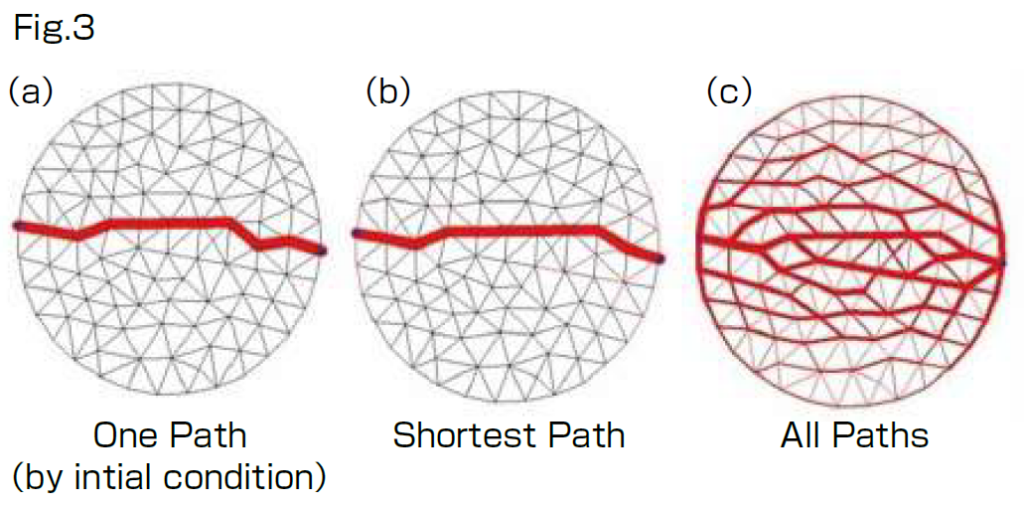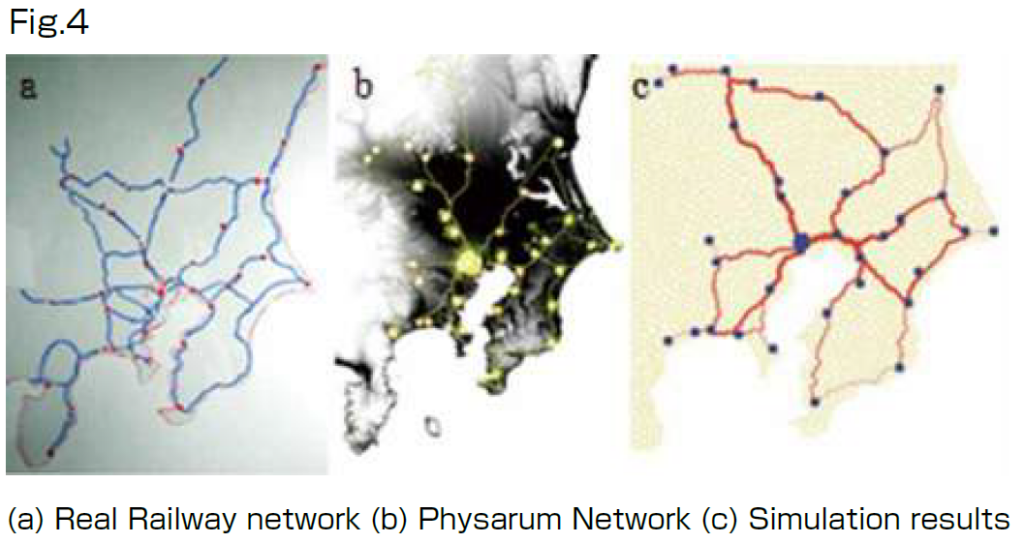Adaptive Network Theory with Organism

TERO, Atsushi
Degree: PhD (Science) (Hokkaido University)
Research interests: Mathematical Modeling, Network Theory
During an organism’s long-term struggle for existence, it evolves many refined techniques for life phenomena. I transcribe such life phenomena to numerical formulas in my work. I also extract the techniques from the organisms and apply them industrially.
There are various types of transportation networks, such as railway networks, ant trails, blood vessel networks, and leaf veins. Commonly used paths develop in these networks, while paths that are not frequently used degenerate. These networks are called “adaptive networks”. The network topology of an adaptive network varies (such as capillaries and the aorta). The purpose of my study is to understand the formation of such an adaptive network.

A true slime mold, Physarum polycephalum, was used for this study (Fig. 1). This slime mold is a unicellular organism, but it has the collective property of containing many nuclei. For example, if it is cut into pieces, each piece can live as an individual. However, the pieces can also fuse and become one living individual. The mold has an adaptive network to transport nutrients. It is a superior specimen for understanding adaptive networks because it can be cut and handled in this way. The transportation network of this slime mold is a product of its solving of mazes (Figs. 2a-c) and is an optimal network (Fig. 3b), according to my co-worker Prof.

Toshiyuki Nakagaki (Future University-Hakodate). However, how the slime mold solves the network problem without a brain or global information remains unanswered.
I reproduced this phenomenon by describing it with numerical equations (Figs. 2d–f). The parameter to solve the maze was found to be the boundary of the network topology. When the growth rate of a thick path is strong, it is the only path that remains (Fig. 3a) because a thick path at the initial state easily grows and further growth also becomes easy. Conversely, if the maintenance cost is high for a thick path, the path cannot maintain its thickness, and the other paths remain (Fig. 3c). The parameter for solving the maze is the boundary of these two types of network formation (Fig. 3b).
I applied this common theory of adaptive networks to a real railway network (Figs. 4a–c). I will also apply it for various adaptive networks. In addition, I study action control using a variety of rhythms and voluntary morphosis of organisms.



